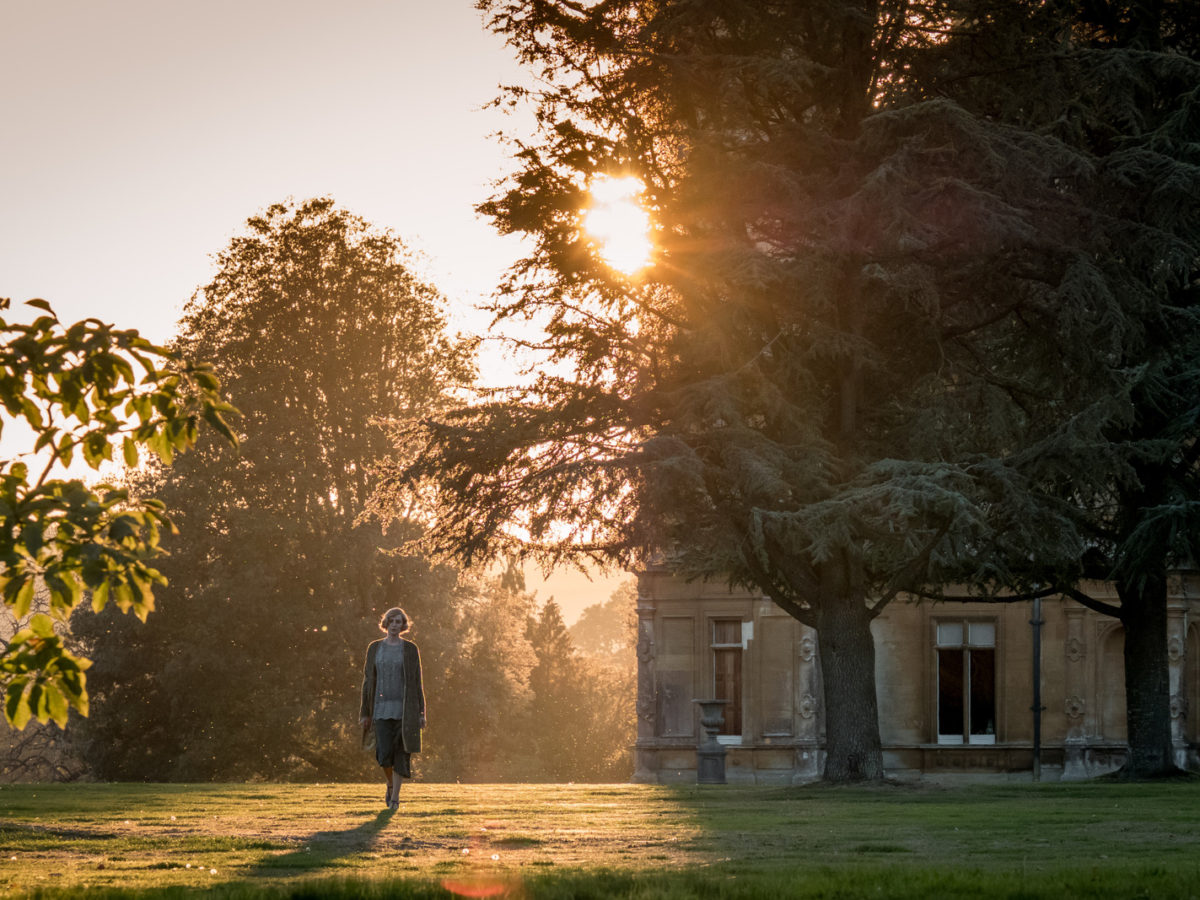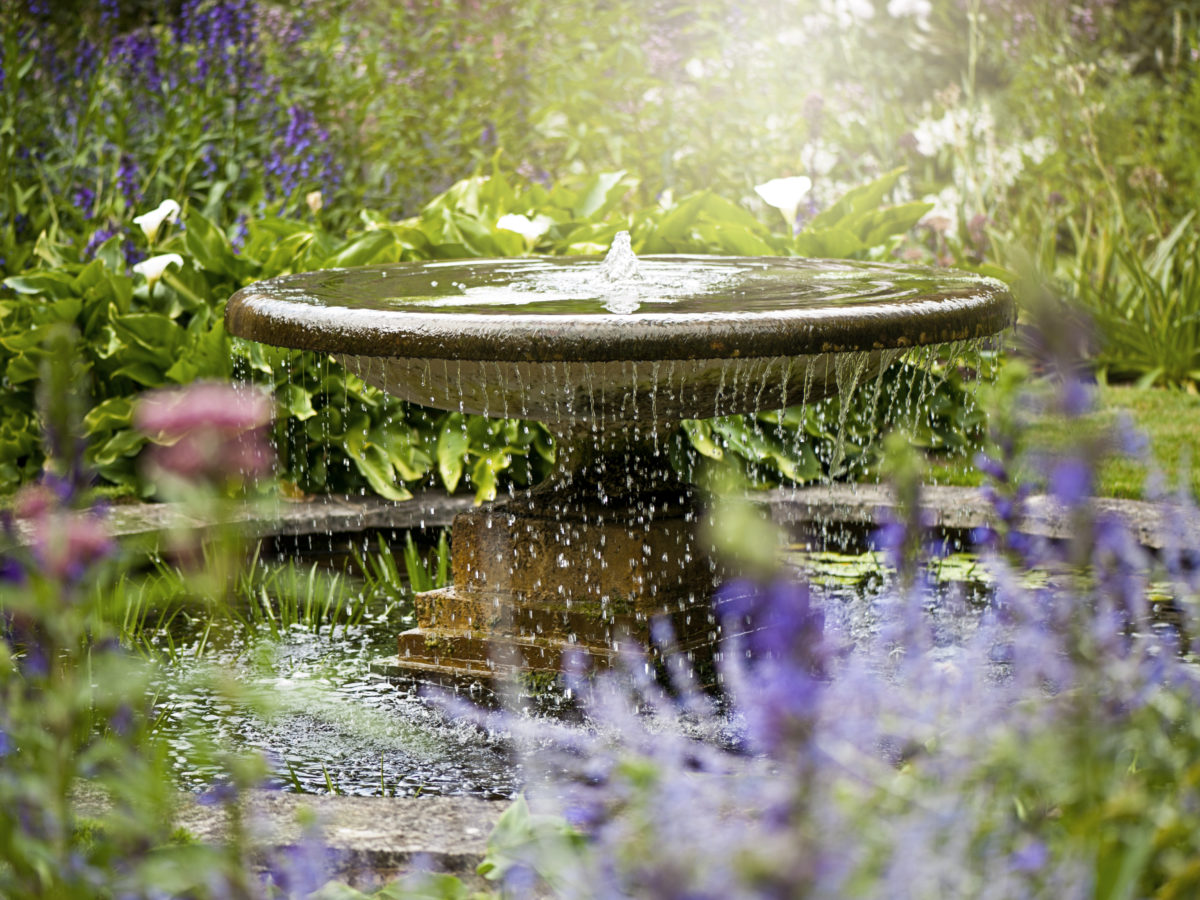
Grow an English Garden Fit for Downton Abbey
Get that “landed gentry” look in your own garden with inspiration from the real Highclere Castle
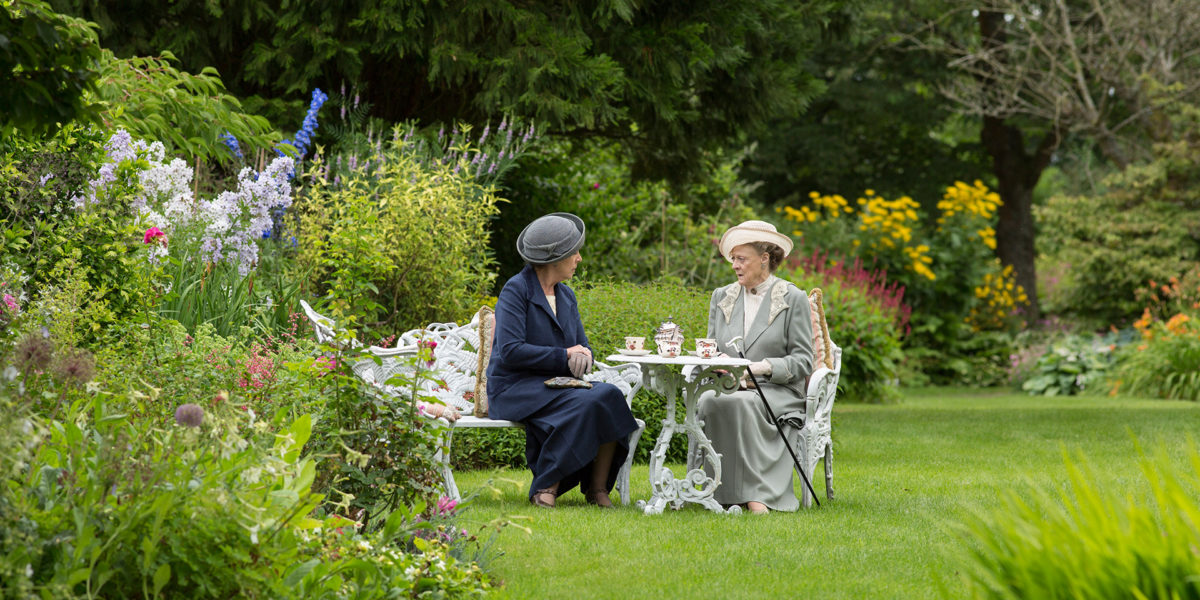
PBS / Masterpiece Classics
The Edwardian era may have ended with the coronation of George V in 1910, but in the English garden, Edward is still king. This was never more clear than in the gardens of the fictional estate of Downton Abbey, filmed at the real-life Highclere Castle in Hampshire, England.
The Edwardian garden was a celebration of the English countryside; the casting away of stringent Victorian formality was seen as much in the English garden as it was in the emerging social progressivism of the era. Respect was still paid to order and framework, but it was with a more laid-back, free-form approach within geometric constraints. Think wild, rambling roses growing languidly between strict lines of mathematically precise boxwood. In the words of the Dowager Countess of Grantham, Violet Crawley, “principles are like prayers; noble, of course, but awkward at a party.”
Fortunately, you don’t have to live across the pond (or come from generations of aristocracy) to grow a beautiful Edwardian garden of your own—just borrow a few of these style elements, and you can have the look of a Downton Abbey garden even in the West.
Lawns
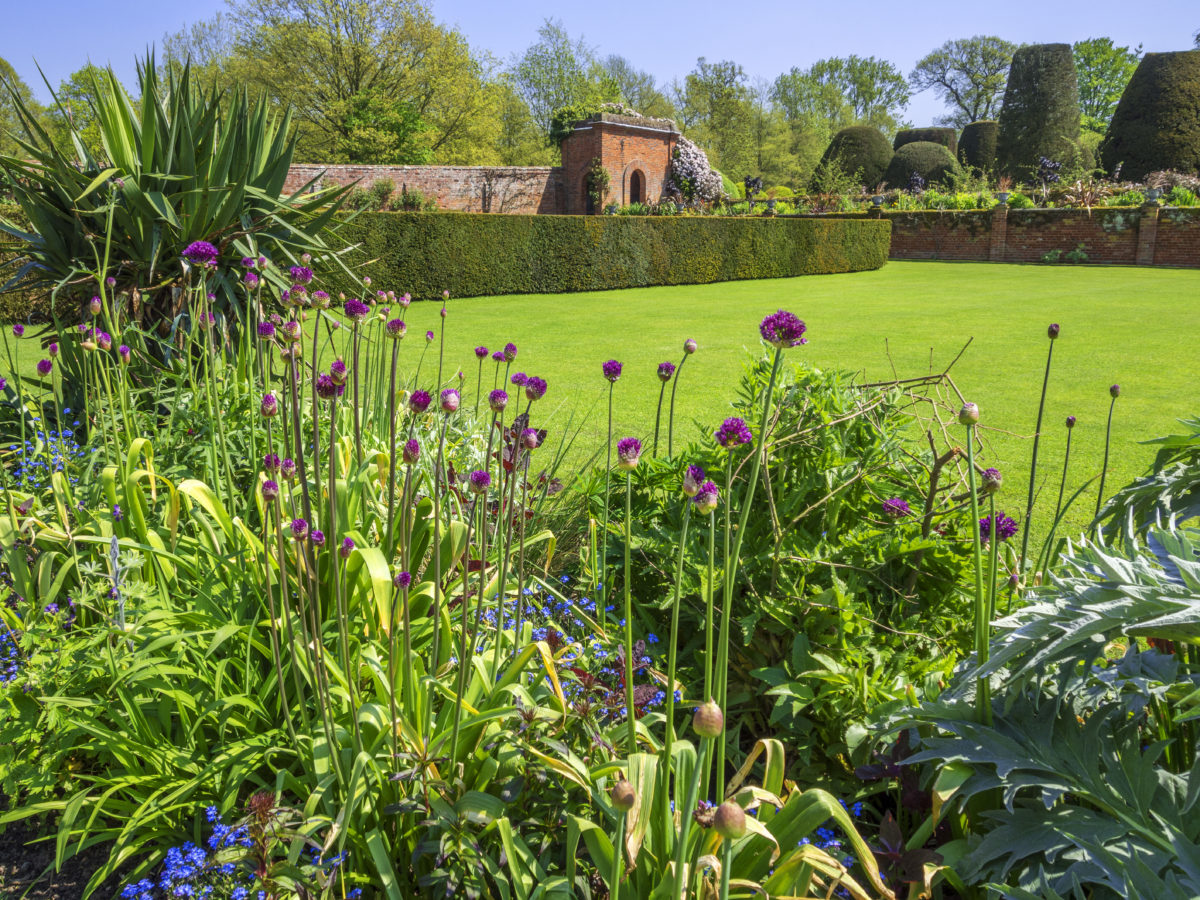
kodachrome25 / Getty Images
The original English lawns of the 17th century were grown from chamomile, not grasses, as a way for the wealthy to demonstrate that they had land for the wasting, not needing it for buildings or food production. Bowling greens (long stretches of lawn) flanked by borders of perennials and low, neatly trimmed hedges were the signature of the casual style emulated in Downton Abbey’s gardens. Ditch the Kentucky bluegrass and return to the fragrant (and water-wise) chamomile to get the look of a lawn while minding the West’s need to conserve water.
Geometry

Yola Watrucka / Getty Images
Precisely trimmed hedges and knot gardens provide the framework within which there is freedom for playfulness, as seen in these boxwood (Buxus) hedges interplanted with blue globe thistle (Echinops bannaticus). The yew is also neatly pruned here (in the foreground, on the left), as is the common practice in the U.S. Azalea makes another nice choice for pruning into short hedges. As with all shrubs, hold off until spring for pruning to keep your plants healthy and strong. Shrubby herbs like lavender and sage make good choices for companion planting, and would have been right at home in Downton Abbey’s kitchen garden.
Perennial Borders
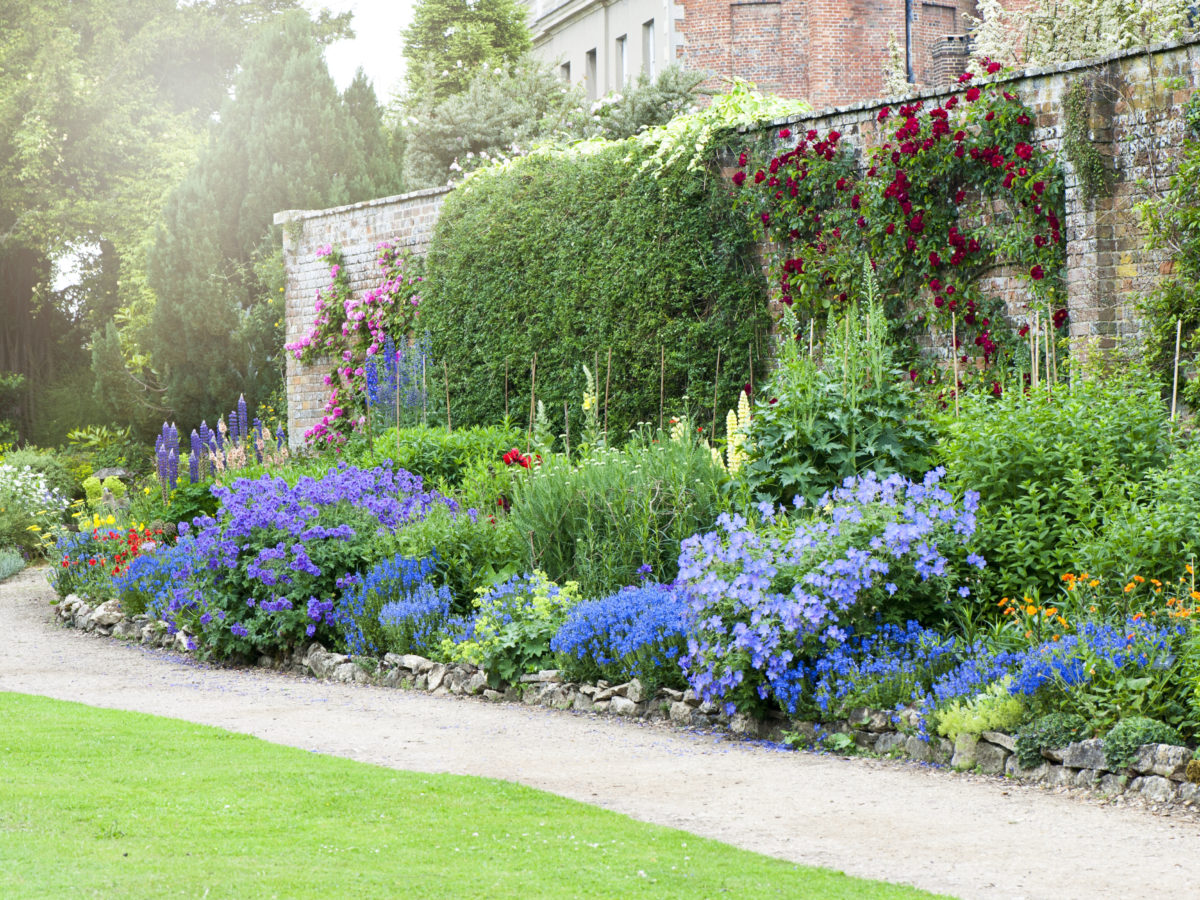
Jacky Parker Photography / Getty Images
Edwardian gardens were all about borders of tall perennials like larkspur, hollyhock, foxglove, Oriental lilies, and lupine, interspersed with lower-growing catmint, daisy, hosta, sweet William, forget-me-not, and cowslip (primrose). At Highclere Castle, the White Border Garden between the Monk and Secret Gardens is planted all in white: agapanthus, hydrangea, roses, and pear trees. Perennial borders are also much-loved in the West, as seen in these garden designs.
Hedgerows
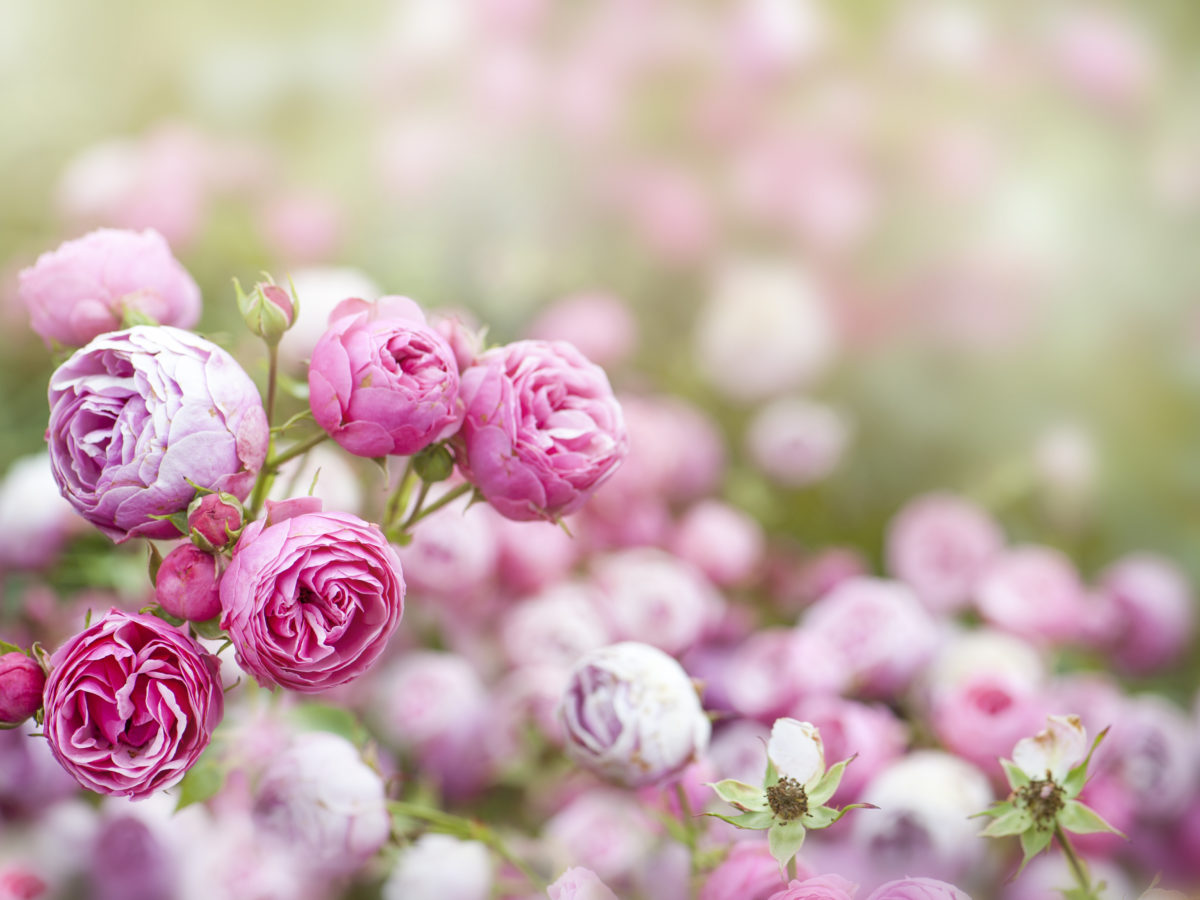
Jacky Parker Photography / Getty Images
Great for providing privacy while maintaining polite neighborliness, long, tall hedgerows filled with roses, privet, and hawthorn are hallmarks of English gardens. If you don’t have sprawling hillsides to delineate with living boundaries, fragrant roses like these ‘All Dressed Up’ floribundas still add instant charm along walls and fences, as well as in smaller gardens. Even smaller cottages (like the one inhabited by Carson and Mrs. Bates in the film) would have had a front yard framed in by casual hedgerows. In the West, achieve this look with native Nootka rose (Rosa nutkana) and Diabolo ninebark, (Physocarpus opulifolius ‘Monlo’), which is closely related to the native Northwest species.
